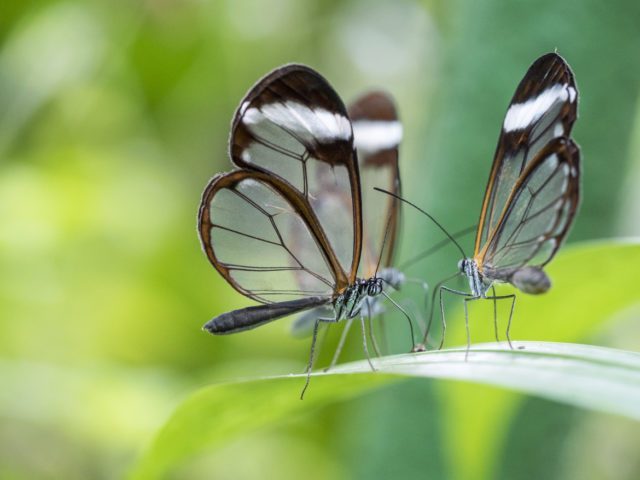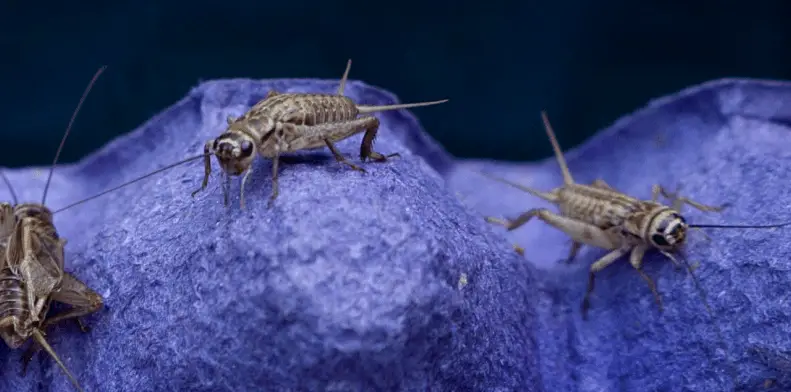When a butterfly specialist goes out into the field, they seldom look the landscape in the face. Scientists who study these insects have a habit of directing their vision towards the lower planes of the meadows, and Constantí Stefanescu has been studying invertebrates for so many years that his back has acquired a certain curvature. He is a biologist who works for the Butterfly Monitoring Plan of Catalonia, and today he has come to measure the density of insects in the Montseny Natural Park, a forest north of Barcelona, Spain, which was declared a Biosphere Reserve by the UNESCO in 1978.
The day is warm and bright, ideal conditions for an entomologist to assess the intensity with which butterflies occupy a meadow. On his shoulders, the biologist carries a net with which he hunts the specimens that he cannot identify from a distance, before releasing them to freedom. But today you hardly need to use it. In fact, it almost never does. “In the last 30 years we have been able to verify that 70% of the butterfly species in Catalonia are in regression”, he explains. “The state the butterflies are in is an indicator of the overall state of the insects. Including, for example, the species that pollinate the crops we depend on.”
The Catalan Butterfly Monitoring Plan is one of the few European programs that systematically assess insect populations at specific times and places. “In the scientific community, for many years, we have had the impression that the decline is huge, but funding to study insects has always been scarce,” admits Axel Hochkirch, who heads the Department of Invertebrates at the International Union for Conservation of Nature and is one of the most recognized entomologists on the planet (so much so that a couple of months ago a new species of cricket discovered on the island of Crete, Greece, was baptized with his name: Leptophyes axeli). Across Europe, among insect scientists, there is this running joke: a mosquito is not as sexy as a wolf, at least when it comes to research funding.
In less than 30 years in Germany there was a loss of biomass of flying bugs between 75% and 82% “Five years ago, however, everything changed,” says Hochkirch. In October 2017, the Krefeld Entomological Society (Germany) published a study that set off alarm bells around the world. With access to rare data collected over 27 years, the scientists were able to determine that in less than 30 years there was a 75% loss of flying bug biomass in Germanic ecological reserves. In the summer months, when invertebrates are more present, the figures reached 82%. The news quickly spread around the world, with newspapers reporting that an insect apocalypse, or Armageddon, was underway.
Since then, scientific efforts have multiplied to assess the scope of the problem. The figures are not encouraging at all. “The most recent studies by the International Union for Conservation of Nature indicate that 30 species disappear from the face of the Earth every day,” says Horchkirch, who led these same investigations. It was also he who led international efforts to create an unprecedented red list of European invertebrates. “Thanks to this effort made by researchers from all over the continent, we were able to determine that a quarter of the continent’s insects are currently in danger of extinction.”
Insect apocalypse
For Alain Klein, a biologist at the Our Natural Park, one of the three ecological reserves that exist in Luxembourg, the expression “insect apocalypse” is not so incorrect. The little Grand Duchy was one of the first European countries to rush into creating an insect protection plan, and Klein has been on this project from day one. “There is an emergency that we cannot ignore, we have to start addressing the issue now.” At the Biodiversity and Genetic Resources Research Center of the University of Porto, entomologist Sónia Ferreira talks about a race against time. “As more data is revealed, we realize that we have a huge problem on our hands, even if it is invisible to most people. The world as we know it is in danger. Without insects, the entire food chain of the planet is at stake”.
The phenomenon, says Ferreira, is visible to the naked eye: “If we think about it, a few years ago, when we traveled a few hundred kilometers by car in summer, there was a time when we needed to stop at a service station to clean the windows. Now we have managed to travel thousands of kilometers without that concern. It’s time to stop and think about how scary that is.”
In May this year, a group of British scientists used precisely this technique to assess the decline. Comparing data from 2004 with that of 2021, entomologists at the Kent Wildlife Trust were able to determine a 65% loss of flying insects that appear on car license plates circulating in England.
The same technique had also been used by Danish biologists measuring data 20 years apart, in a study published in 2019: in a 1.2 kilometer drive through the Danish countryside, the reduction of bugs on car windows was 80% On a 25 kilometer drive, it was 97% The base of the planet’s food chain is disappearing. “We are in a great global experiment that we cannot reproduce. Humanity will not want to know what the result of this experiment is” Lisa Reiss, a biologist at the University of Trier, one of the main entomological research centers in Germany, explains it this way: “We are in a great global experiment that we cannot reproduce and of which we do not know the result. Humanity will not want to know what the outcome of that experiment is.”

The butterfly Effect
The total extinction of insects is an unlikely scenario. Axel Hochkirch is sometimes asked whether it will be the tiny creatures or the humans that will go first, and the scientist has little doubt: “Humans will go first.” His argument is simple: “Invertebrates are here long before us, and they make up three quarters of the species on the planet. It would be arrogant to think that we will survive them.”
But there is another point on which the scientist insists. Insects perform essential functions for human life: ecosystem services. A third of all the food we eat depends on pollination, for example. And if that is the problem, the signs are already alarming. By the end of July, sunflower oil prices had skyrocketed around the world due to the war in Ukraine. In India, the world’s third-largest consumer, farmers faced a problem: domestic production had to be increased, but bees had become so rare in the south of the country, where the big plantations are located, that sunflowers simply weren’t blooming.
This summer, farmers in the district of Tenkasi had no choice but to pollinate the plants by hand. It is a long and complicated process, in which human hands collect the pollen from each flower with a cloth and rub it with another. To meet demand, workers have to be hired, which drives up production costs, and they don’t solve the problem as quickly as pollinators. In southern China, and especially in Sichuan province, the region of the great apple and pear orchards, the issue has been the subject of intense debate for more than a decade. Currently, almost all pollination in the region is done manually, something that experts consider unsustainable in the medium term. At the moment, the issue is Asian, but the disappearance of pollinators in Europe is also worrying.
Guillem Mas drives his Jeep through the Catalan Pyrenees to a meadow at an altitude of 1,600 metres. “We bought some land here to protect the ant butterflies, which are disappearing at breakneck speed,” says the Spanish biologist from Paisatges Vius, an association that works to restore habitats in this region. He talks about a species of mountain butterfly called Phengaris alcon. A blue-winged insect known for its peculiar life cycle, and also for being an important pollinator in high-altitude landscapes. “We bought some land here to protect the ant butterflies, which are disappearing at breakneck speed”
These butterflies mate on specific plants in the Pyrenees, and it is there that the females lay their eggs. When the larva hatches, it feeds on the flowers of these plants. Within three weeks it develops a shape and smell similar to those of ant larvae. It then falls to the ground and is picked up and carried to an anthill. Deceived, the ants take her to the nest, and for 10 months she feeds on ant eggs. In mid-spring, it begins to form a chrysalis and does not leave the nest until early summer.
“The problem now is the radical change in land management that endangers the viability of these animals,” says Mas. Anthills only occur if there are specific plants and ants that support their life cycle. But the meadows where these species thrive were grazed by sheep and goats. “In the last 20 years, cows have taken their place. They consume much more grass, which prevents the ideal bloom for insects,” he continues. Without these butterflies, the landscape loses biodiversity. And, in the absence of diversity, fields become less productive.
“Then the lack of insects is compensated with more fertilizers, with more pesticides, which creates a vicious circle in which the species cannot reverse the threat,” says the Spanish scientist. “We all suffer for it.” “Climate change is part of the problem, but it is not the big issue that explains the insect catastrophe,” says the Luxembourg biologist Alain Klein. The monocultures that have invaded landscapes, intensive production—particularly of livestock and the fields that feed them—and the pesticides and fertilizers now used on a large scale to make the land fertile ultimately explain the demise of invertebrates. . “As human populations grow, so do food needs. But the way we promote this large-scale consumption will end up digging our own grave,” Klein argues.

We need insects to survive, yes, but they don’t need us at all
Edward O. Wilson, the American scientist who died last year and is considered the father of sociobiology and biodiversity, wrote in 1987 in his book ‘Conservation Biology’: “I estimate that there are 42,850 species of vertebrates in the world, of which 6,300 are reptiles, 9,040 are birds and 4,000 are mammals. In contrast, 990,000 species of invertebrates have been described – of which only 290,000 are bees – seven times the number of all vertebrates combined. The chapter dedicated to the conservation of insects was curiously called ‘The little things that run the world’. And his conclusion in the study was pretty clear: “We need insects to survive, yes. But they don’t need us at all.”

For those who have experienced shifts in consciousness and know that more peace, joy, and love awaits in a better living environment. A bold shared vision. A living community and hub for innovation. A sustainable ecosystem for living and working. A model for the new future.
